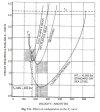Hey flyers,
As per my name, I am 7 lessons into my PPL. I suppose I will be posting here a lot.
My question is regarding the region of reverse command and what it pertains to.
I understand that the roles reverse and that pitch is for altitude and power is for airspeed.
Is this only the case during low air speed? When getting set up for slow-flight or power-off stalls, I seem to take forever to get configured and I am fighting with the airspeed and altitude once those flaps come down.
Do I need to pitch for altitude and power for air speed when getting configured for slow flight and power-off stalls?
Secondly, does trim also hold altitude as well as airspeed?
When I change altitude, my airspeed also changes (for example, I find it difficult to maintain 74 knots when putting full power in to climb)
Please don’t laugh… thank you
By now it should be obvious that you are not the only one who is confused by this term. As you have read, there seems to be quite a range of interpretations. My hypothesis is that aerodynamics is difficult and unintuitive, and therefore the explanations provided in our pilot training materials are oversimplified. This, in turn, leaves a lot of room for misinterpretation, further oversimplification, and the imaginative formulation of
alternative facts by individuals who never really understood the concept in the first place but find themselves compelled to explain it.
To have a truly useful grasp of this topic it is necessary to understand the following fundamental factors and how they relate (or, are interrelated) to each other: angle of attack; parasite drag; induced drag; airspeed; and power. With that in mind, please allow me to share my own personal oversimplific misunderstanding, which, I hope, will be competitive.
Straight to the point (and as simply as I can state it):
Region of Reverse Command refers to a range of speeds in which more power is required to fly slower. That's it in a nutshell, but please indulge me as I fully embarrass myself with an attempt to delve deeper into this topic. Here’s where a diagram might be helpful.
The diagram below (representative of a small, swept-wing jet), shows the relationship between power required (thrust, or T) and speed. I chose this diagram because it’s realistic and includes plots for four drag configurations: clean; gear-extended; gear + approach flaps; and gear + full flaps. In order for the diagram to make sense, we have to understand that
induced drag increases as speed decreases, and
parasite drag increases as speed increases. Total drag is the sum of induced drag and parasite drag. At some speed, total drag is lowest (L/Dmax). L/Dmax has important significance beyond the scope of this discussion.

Let’s first look at the bottom curve for the clean configuration. The lowest point along the curve, L/Dmax, occurs at approximately 240kts. At that speed, Total Drag (parasite + induced) is lowest, therefore the amount of thrust required (Tr) to maintain unaccelerated flight is the least (830 lbs). Moving to the right (faster) along the curve, we find that more thrust is required to fly at a faster speed, which is intuitive. But, counterintuitively, if we move to the left (slower) along the curve, we find that
more thrust is required to fly slower than 240 knots. In fact, the same amount of thrust is required to fly at 160 kts as is required to fly at 390 kts. Because more power is required to fly slower than 240 kts, we can define the speed range between 240 kts and stall speed as the
Region of Reverse Command (for this aircraft in the clean configuration).
The curves for configurations that include landing gear and flaps show that the same thrust—speed relationship exists regardless of configuration, but the speeds for L/Dmax are slower and the curves are significantly steeper. We can also note that, for all configurations, in the Region of Reverse Command the thrust required increases exponentially as airspeed decreases linearly. These are all factors that we should be acutely aware of, especially during the initial takeoff and final approach phases of flight when our airspeed is relatively low while the ground is relatively near, because at some point the power required to make the airplane do what we want may actually exceed the maximum power available from the engine. In such a situation, we may not have the option of decreasing pitch attitude to use gravity to help us accelerate (trading altitude for airspeed). If we get into a situation in which we are unable to accelerate or climb, unless the ground in front of us happens to be a suitable landing surface, the last few minutes of our flight may be featured in a YouTube video. You can experience and explore the Region of Reverse Command while practicing a maneuver called flight at minimum controllable airspeed, or slow flight, with your CFI.
With regard to your other questions, let me return you once again to the fundamental factors of aerodynamics: angle of attack/parasite drag/induced drag/airspeed/power. It's a topic that's beyond the scope of a forum thread, but thankfully there is a wealth of information available on the Internet (and some of that info is actually accurate). You can start with any of the commonly-used pilot training books and/or online courses, and then with a few mouse-clicks you can dive as deeply into the subject as your math skills will take you. It's a most peculiar rabbit hole, and if you happen to see Alice while you're down there please tell her that I want my Jefferson Airplane album back.
Lastly, it's great to hear that you're learning to fly. I hope you find it as enjoyable and rewarding as it has been for me, and I wish you the best.
-Edited for clarity, just in case anyone actually reads this post-


